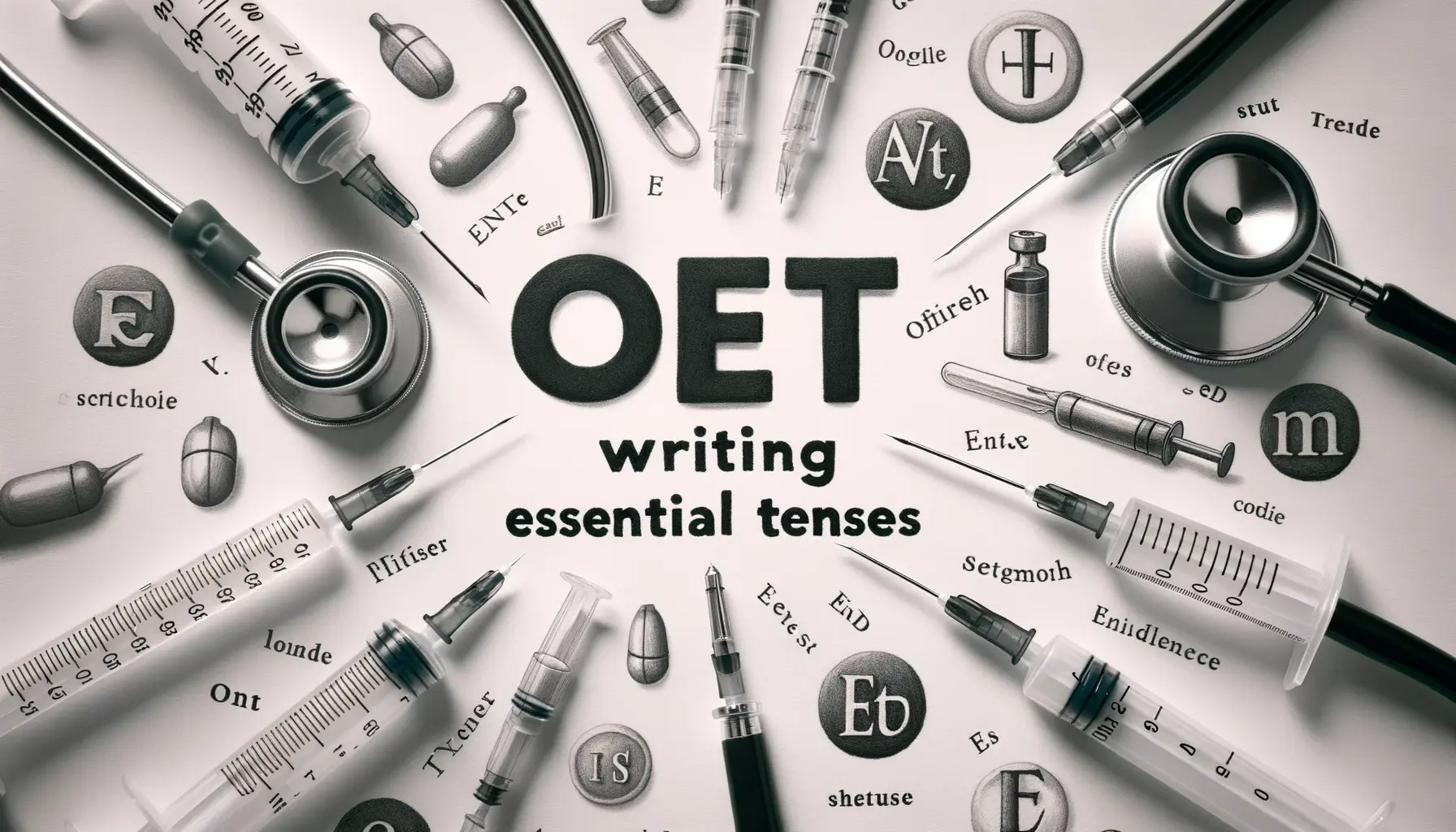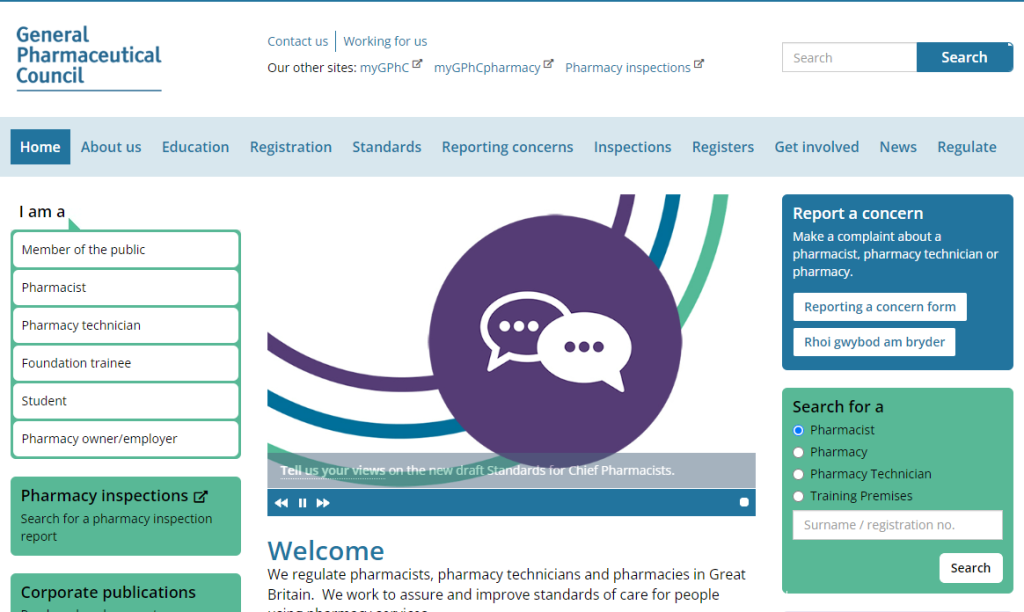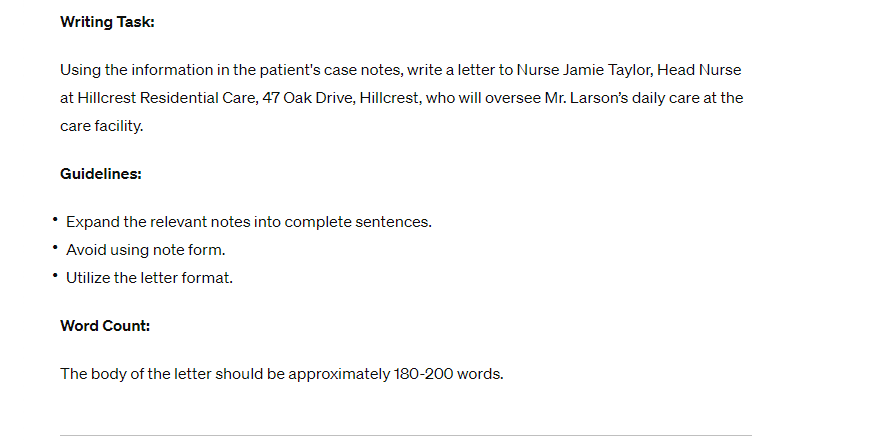In the OET Writing sub-test, crafting a letter, typically to another healthcare professional, is a crucial task. Clear, accurate communication hinges on a robust grasp of English tenses. This article will focus on four pivotal tenses: present simple, present continuous, past simple, and present perfect. We’ll illuminate their importance in OET Writing through practical examples.
Present Simple
Purpose: The present simple tense is utilized for expressing habits, routines, established facts, and universal truths.
OET Writing Examples:
- ‘Mr Smith suffers from chronic asthma.’
- ‘Ms Fedele resides alone and relies on a wheelchair.’
- ‘Her medical records reveal a history of severe chest pain.’
Present Continuous
Purpose: This tense is applied to actions currently in progress at or around the time of speaking or writing. It’s also handy for indicating future plans.
OET Writing Examples:
- ‘Mrs. Jones is currently enduring severe back pain.’
- ‘She is on a regimen of two tablets daily.’
- ‘Ms Klim is showing positive responses to the new treatment.’
Past Simple
Purpose: Use the past simple tense for events or actions completed in the past, whether recently or long ago.
OET Writing Examples:
- ‘During the examination, her abdomen showed tenderness upon palpation.’
- ‘Yesterday, she experienced a sharp abdominal pain.’
- ‘He arrived at the clinic presenting symptoms of shortness of breath and a continuous cough.’
- ‘Her last blood pressure reading stood at 140/90.’
Present Perfect
Purpose: This tense connects past actions or events, which occurred at an unspecified time, to the present moment. It’s also used for describing experiences or changes over a period.
OET Writing Examples:
- ‘Mrs Baxter’s pain levels have decreased from 8 to 4 since her last appointment.’
- ‘There has been significant improvement in Mrs. Green’s condition since commencing treatment.’
- ‘Concerns regarding potential side effects have been raised by her.’
Do you know OET Writing criteria? it is very important to master oet writing criteria to be profient in OET Writing.
Why Mastery of Tenses Matters in OET Writing
The OET Writing sub-test demands clarity and precision. Appropriate tense usage is pivotal for conveying the patient’s current state, medical history, and advised future actions. Incorrect tense application can lead to ambiguity, misinterpretation, and risks in patient care.
For example, ‘The patient experiences chest pain’ (present simple) versus ‘The patient experienced chest pain’ (past simple) can significantly alter the context. The former implies an ongoing issue, while the latter refers to a past occurrence.
Challenge Yourself with This Quiz
Fill in the blanks with the correct verb form. Answers are provided below.
- Martinez __ in the Radiology Department since 2015. (work)
- The patient __ a severe headache upon his hospital arrival yesterday. (have)
- Nurses routinely __ patient vitals every four hours. (check)
- The research team is currently __ on developing a new flu vaccine. (work)
- Last year, she __ an innovative paper on genetic mutations. (publish)
- In the past, the patient __ any allergic reactions to medications. (not have)
- Next week, the physiotherapist __ with Mr. Brown’s rehabilitation. (start)
- The hospital __ an additional wing to increase patient capacity. (build)
Enhance Your OET Writing with Tense Mastery
Mastering tense usage forms the cornerstone of the OET Writing sub-test. Knowing when and how to employ present simple, present continuous, past simple, and present perfect tenses allows for clear, precise information delivery, crucial for effective healthcare communication. As you gear up for the OET, diligently practice these tenses in various scenarios to refine your writing skills and boost your confidence.
Answers
- has worked
- had
- check
- is working
- published
- has not had / hasn’t had
- is starting
- is building









Leave a Reply